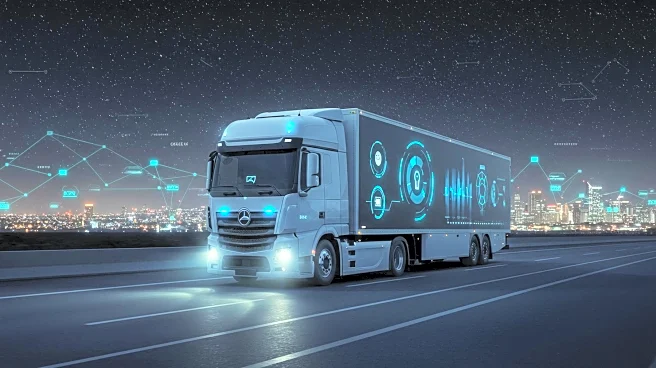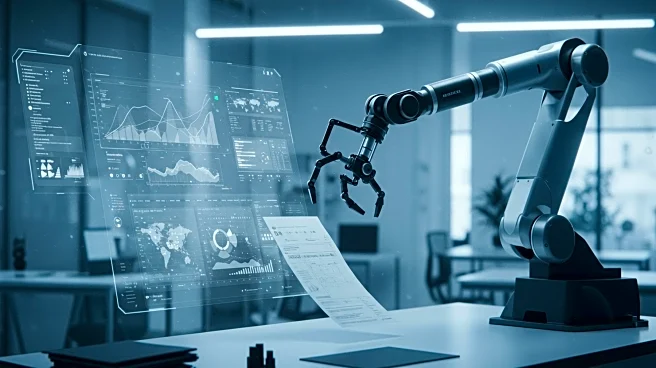What's Happening?
The trucking industry is increasingly adopting artificial intelligence (AI) to improve operational efficiency and profitability. AI is being utilized to process vast amounts of data generated by telematics systems, transportation management systems, electronic logging devices, onboard cameras, IoT sensors, and driver apps. This data, which is often underutilized, can be analyzed in real-time to uncover inefficiencies, flag anomalies, and boost productivity. AI-backed decision intelligence optimizes dispatch management by matching drivers to loads holistically, enhancing driver satisfaction and profitability. The industry faces high customer expectations for hyper-accurate ETAs and real-time tracking, which AI helps meet by automating dispatching, load management, and bid analysis. Economic pressures have prompted carriers to reassess processes, with AI offering tools to automate tasks, predict maintenance needs, and improve driver retention strategies.
Why It's Important?
The integration of AI in the trucking industry is crucial for maintaining competitiveness and meeting evolving customer demands. By automating complex processes, AI helps carriers reduce operational costs, maximize resource utilization, and improve margins without increasing headcount. This technological shift is essential for fleets to handle higher freight volumes and maintain profitability in a challenging economic environment. As AI tools become more affordable, the gap between adopters and laggards widens, making AI adoption a competitive mandate. Companies that embrace AI are building foundations for long-term agility and resilience, while those who hesitate risk being outpaced by innovation.
What's Next?
The trucking industry is at an inflection point, with AI adoption expected to continue growing. Major fleets are already using AI for freight forecasting, pricing optimization, and driver safety coaching. As AI tools become more widespread, the industry standard is rising, and companies must integrate AI-driven automation into their operations to stay competitive. The focus will be on building ecosystems of integrated technologies that automate and optimize decision-making processes, ensuring long-term success and profitability.











